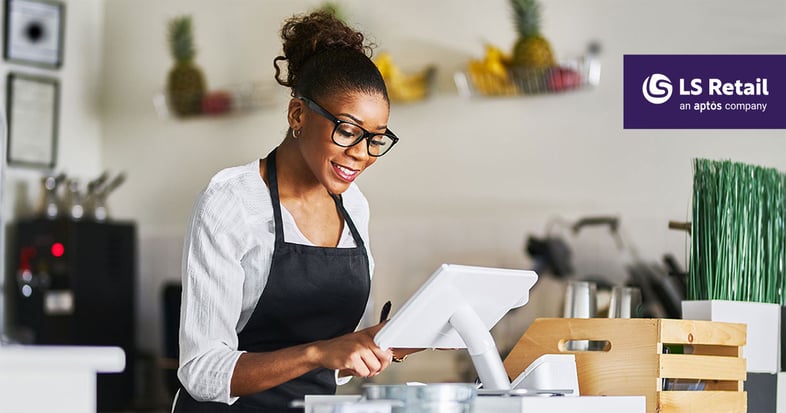7 questions every restaurant CEO should ask when choosing a POS system

So, you're a restaurant CEO or owner who's decided it’s time for new point of sale (POS) software for your business. Great move! A reliable POS system is essential to keep service running smoothly, manage daily operations, and handle transactions efficiently. It’s one of the most important technological choices you’ll make, as it will shape your restaurant’s performance and customer experience for years to come.
With so many solutions available, it can be difficult to know which one will best fit the needs of your restaurant, café, or food service business. To help you make the right choice and partner with a vendor you can rely on, here are seven key questions to guide your decision.
1. Which functionality do I really need?
Point of sale systems have gone from being simple cash registers to complete solutions that cover a whole range of operations in your business. Which is why looking for a modern POS system can be an overwhelming experience. Biometric login, replenishment, self-service, loyalty, online ordering, table tracking, recipe management… these all sound like good features to have. Yet, they may not all be as useful to your business. After all, a full-service restaurant has very different needs from a takeaway pizzeria.
Before you choose a system that promises to do it all, stop and ask yourself: what functionality do I really need? A good way to start is by mapping your requirements — front of house, kitchen, back office, and customer experience — and dividing them into three columns:
- Must-haves: core features you can’t run without
- Nice-to-haves: helpful but not critical
- Extras: features you could benefit from later, but don’t need right now
By selecting a software solution that responds to your needs, you will save money and effort in the software implementation phase, every time you have to train new employees, and during daily operations. A restaurant POS with too many options can get in the way of your employees managing their routine tasks, delaying their work and adding needless complication.
2. Is the POS designed specifically for restaurants?
Point of sale systems are not “one size fits all”. Even if some typical retail functionality (for example, employee scheduling or customer loyalty) can fit the food service industry, restaurants have specific requirements that retail software typically doesn’t cover. A restaurant-focused POS will help you manage key daily tasks such as:
- Menu and recipe management: create, update, and cost recipes
- Stock counting: track ingredient and materials usage in real time
- Meal customization: add or remove ingredients from a dish
- Promotions and deals: manage offers like “starter and main for $30”
- Service flexibility: split bills, combine payments, handle tips
- Kitchen integration: send orders directly to the kitchen display or printer
- Table management: track seating, open tabs, and table turnover
Don’t settle for a system that is not designed with your needs in mind. Instead, find a software solution that will make your life easier, supporting your teams with all key tasks, from menu planning to kitchen production to service.
3. How will it help deliver consistently quick service?
Successful restaurants thrive on speed and consistency. During the Saturday night rush, the last thing you need is a lagging POS system that slows service and frustrates guests. That’s why it’s important to test whether the software can keep up with the pace of your business. When evaluating a point of sale, make sure to ask the vendor and, if possible, current users of the system, questions like:
- Is the interface user-friendly? Can it be customized so staff only see the functions relevant to their role?
- How does it handle payments? Can it process split bills, move tabs from bar to table, and accept multiple payment methods without extra steps?
- Is it mobile-ready? Can staff take orders and payments on handheld devices like tablets or smartphones?
- What’s the average speed per transaction?
- What happens during downtime? If the internet goes out, can the system still take orders and process sales—or will staff be forced back to pen and paper?
A restaurant POS that can handle these scenarios will keep your service smooth, even during your busiest times.
4. What is the return on investment (ROI)?
A new restaurant POS system is a big commitment, but the right one will pay off many times over. Before you go for the option with the lowest upfront investment, analyze how each POS solution will impact your bottom line. There are many factors you should keep in consideration when calculating the ROI:
- Time spent training employees. In places with high staff turnover, you can save lots of time and money with an intuitive point of sale system that speeds up training of new recruits.
- Reduced waste. Does the new system help manage inventory and track ingredient use? Ordering the right amounts of food, and using what you have efficiently, can lead to significant savings.
- Customer loyalty. A system that supports loyalty programs and enables you to send registered customers targeted offers and campaigns can help you increase repeat visits.
- Time wasted aligning data. Using separate systems for sales, inventory, staff schedules, and vendors means hours spent comparing numbers and fixing discrepancies.
A single platform with a single data source simplifies accounting, saves time and money, and gives you clearer insights for faster, better decisions. By weighing ROI carefully, you can choose a point of sale system that delivers lasting value to your restaurant business.
5. Is the vendor trustworthy?
Not every technology provider is reliable. When choosing a restaurant point of sale system, the vendor’s reputation matters just as much as the software itself. A low-cost option may look tempting, but the savings quickly disappear if problems arise and you discover there’s no support, no updates, and no one to call for help. The right provider will have:
- A proven track record in the restaurant industry
- Ongoing technical support you can rely on
- Regular updates to keep your system secure and efficient
Choosing a trusted partner means peace of mind today, and confidence they’ll still be there tomorrow.
6. Will the software support me when my business grows?
In two, five, ten years, you may have multiplied your customers, added a breakfast menu, expanded to multiple locations - perhaps your chain will go international. When selecting a new POS, make sure that you can easily scale with you:
- Roll out new terminals and open additional locations with minimal effort
- Integrate easily with other systems such as your preferred ERP, PSP, loyalty platform, third-party delivery apps, and more
- Add new functionality without complex integrations such as restaurant reservations, advanced data analytics, AI forecasting, etc.
- Support local and global expansion: comply with multiple languages, currencies, fiscalization rules, and localizations
A rigid system that doesn’t allow you to make changes or integrate to other solutions may be cheaper to start with, but you’ll be forced to replace it as soon as you grow. When investing in new technology, remember that it will be with you for many years. Choose a restaurant POS system that gives you flexibility and support, not just as the business you are today, but also the one you want to be tomorrow.
7. Can I speak to one of your current customers?
On marketing brochures, it often seems like every restaurant POS system can do everything; it’s flexible, agile, feature-rich, and of course, easy to use. But don’t just take the vendor’s word for it. During the selection process, it’s a good idea to:
- Ask for references: the best providers can give a list of current customers
- Reach out to similar businesses: focus on those most like yours – cafes, bars, pubs, full-service, fast food, etc.
- Gather practical feedback: ask about day-to-day use, support, and reliability
- See the system in action: if possible, observe firsthand how the POS works and whether it fits your needs
Checking with real users gives you a clearer picture of what the system can actually deliver. If you still have doubts, or need more information, get in touch with us: our restaurant technology experts will be happy to help you find the right solution for your needs.

